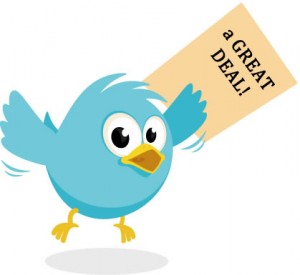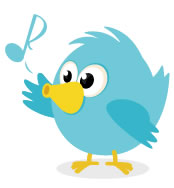Filling the Sales Pipeline with Twitter
The very subject of this post makes me shudder: the idea that social media in general and Twitter in particular, should be used for lead generation is horrifying. At least it is if we use old-school sales approaches to new-school social media. At its best, social media is one of the greatest revolutions in communications […]

At least it is if we use old-school sales approaches to new-school social media. At its best, social media is one of the greatest revolutions in communications technologies, enabling people from across the world to connect with one another. At its worst, it’s another channel for salesmen to send us pitches.
Social media and sales don’t work together too well. All of the psychological factors that make social so powerful get short circuited when sales comes into play.
Are Sales And Social Antithetical?
When someone is selling you, you’ve got to be on your guard. For social media to be the magical experience it has the potential of being, you need to feel trust for the people you’re engaging with.
The traditional sales methodology employed by many organizations involves taking a list of potential leads and calling them out of the blue. In fact, it’s called the “cold call.” And while there are many handy books out there that make it seem perfectly simple, mention “cold calling” within earshot of most sales people and you’ll likely see immediate signs of anxiety.
There’s a good reason for that: very few people enjoy receiving cold calls — and thus tend to be a bit dismissive of the caller, or even rude. It takes a strong personality in a sales person to endure so much rejection.
The idea is that a certain amount of cold calls will generate meetings, and that then a certain amount of meetings will result in another amount of closed deals.
I’ve often heard of it referred to as a “numbers game.” In professional services, complex sales, and B2B, I’ve even seen this method work. After all, it can be pretty difficult to otherwise get in front of the right person.
Twitter And Sales
A lot of sales people have been using Twitter to further their traditional sales approach. It’s not uncommon to see the Twitter equivalent of the cold call. “Hey @so_and_so, I see you’re talking about blue widgets. Acme Corp has GREAT blue widgets! Can I call you?”
Sometimes, the sales person is more subtle — they put their messages into an auto-response when someone follows them. Or they put a sales message into their profile.
Whatever the case, they’re acting like sales people. Unfortunately, most people have been trained to strongly dislike anything that smells like good old-fashioned sales.
 But, But, But…
But, But, But…
Using Twitter for those sales-focused self-promotional tweets is antithetical to the spirit of social media, yet many companies have dramatically increased sales that can be traced back to Twitter interactions.
One business-to-business (B2B) professional services company I know of increased revenue by over $25k per month this past year (that’s for a million-dollar-a-year company) from Twitter.
So, how can a company use Twitter to have a real impact on sales?
- Become a part of your communities.
- Really connect with individuals.
- Participate in Twitter chats
- Bring it offline
Sales managers find the cold call pipeline so appealing because it’s a sausage-grinder process. If you adhere to your daily quota of calls over a long period of time, you can develop a somewhat predictable activity-to-results outcome.
It’s possible you could also quantify the activities mentioned above, like this:
- Help five people out every day.
- Engage in your community for a half hour every day.
- Join three Twitter chats every week.
- Participate in one offline meeting with your Twitter community every month.
The pipeline doesn’t have to be designed to go from cold call to customer. It could, for instance, go from “people I’ve been able to help,” “people I’ve shared knowledge with,” “people I’ve connected with in offline world,” to “people who’ve considered doing business with me.”
Being An Un-Sales Person

It just requires a delicate finesse in knowing when to be a good neighbor and friend, and when it’s ok to drop a bit of sales.
And if you’ve discovered your own effective way of still being a sales person within Twitter, I’d love to hear about it.
Feature image and accompanying images from iStockPhoto used under license.
Opinions expressed in this article are those of the guest author and not necessarily MarTech. Staff authors are listed here.
Related stories
